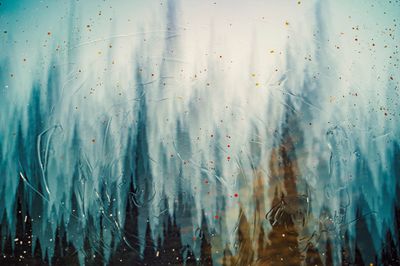Can we teach creativity ? (Part 3)
After teaching a few classes on creativity, I’ve come across a few more ideas, so take this as a short addendum to my creativity articles. I might update it from time to time. This will be more focused on parkour, but the ideas might apply to other sports.
How can we make creativity less abstract ? #
One question I’ve been asking myself is how to make creativity less abstract. If I want my students to focus on the creativity of their lines, rather than say, speed, using the shorthand « be creative » would be useful. The problem is that everybody understands what going fast means, but being creative is less clear. So how can we put more flesh on that idea ? One solution I’ve come up with is to start talking about emotions. Because being creative means novelty, it can bring negative emotions like the fear of trying something new ; but also positive emotions when you achieve that novelty. The most specific emotion seem to me to be surprise : surprise that something is achievable ; surprise that nobody has thought about that until then ; surprise that you can use this environment in that way. So let’s say you start instructing your students to create a line with the aim of surprising the other members of the group. That should be a nice emotional constraint. After a few times, there should be enough flesh on the concept of creativity to start using the shorthand.
Can we use more complex constraints ? #
I think most practitioners would benefit from very simple constraints. But as an additional challenge, or just to add variety to training, more complex constraints can be used.
Maybe we can make more use of emotional constraints, like “do something that scares you”, “something that makes you happy”, etc. More generally we could invite our students to put themselves in the skin of a character to promote creativity. “Move like it’s the first thing you do in the morning and you’re not fully awake yet” or “move like you’re drunk” can end up creating pretty creative and funny parkour lines.
Elias Borrajo has talked about using patterns of constraints. Let’s say every second “move” has to be done with both hands, and every third move has to be done with only one foot. You’ll end up with a criss-cross of constraints, sometimes you need to satisfy one or the other, sometimes both at the same time, sometimes none.
I’m not sure who to attribute this idea to, but maybe it was Elias too: every time you use one hand, you need to turn left; every time you use both hands, you need to turn right. This constraint works both ways. It either pushes you in a region of the environment that you were not aiming to go to, forcing you to explore it; or if you have somewhere you want to go, you really need to think of the sequence of moves that will get you there.
Another interesting constraint comes from Sébastien Sevino and Tristan Bana. Take a set of obstacles, and create a line with a certain sequence of techniques. Once it has been memorized, just move to different obstacles, and try to do the same line, using an identical sequence of techniques, mutatis mutandis. This forces you to explore in order to find ways to apply the same techniques on very different obstacles, and requires to adapt and think outside the box.
As you can see, creativity is nested. In order to promote motor creativity, teachers need to be creative about the exercises, games and constraints they use. I hope we can make this part of creativity a collective endeavour, because I clearly have learned a lot from interacting with other teachers.

